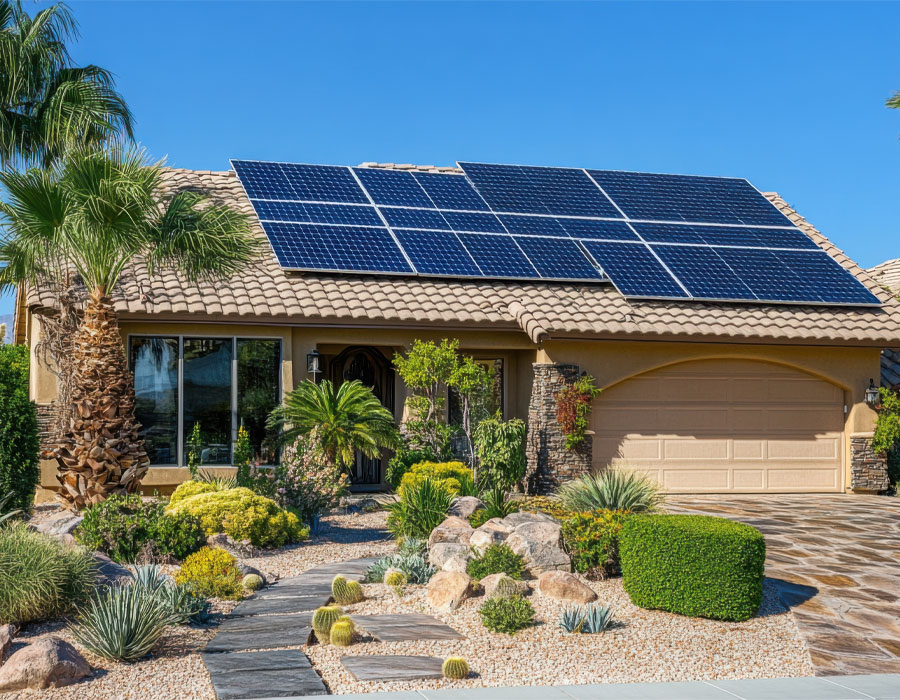Frequently Asked Questions
How can I incorporate shade solutions into my Arizona outdoor living design?
Incorporating shade solutions into your Arizona outdoor living design involves using structures like pergolas, shade sails, or strategically placed trees to block sunlight. These elements not only enhance comfort but also create inviting, functional spaces for relaxation and enjoyment.
What maintenance is required for custom landscape lighting systems after installation?
The maintenance required for custom landscape lighting systems after installation includes regular checks of the fixtures, cleaning lenses to ensure optimal brightness, and inspecting wiring for any damage. Additionally, replacing burnt-out bulbs promptly will keep your system functioning effectively.
How long does the installation process for custom landscape lighting usually take?
The installation process for custom landscape lighting typically takes between one to three days, depending on the complexity of the design and the size of the area being illuminated.
What shade options suit Arizona outdoor spaces?
The shade options that suit Arizona outdoor spaces include pergolas, shade sails, and strategically placed trees. These solutions not only provide relief from the sun but also enhance the aesthetic appeal of your landscape.
How to choose plants for shade solutions?
Choosing plants for shade solutions involves selecting species that thrive in low-light conditions, such as ferns, hostas, and shade-tolerant perennials, while considering their water and maintenance needs to create a lush, sustainable landscape.
What are the benefits of shade structures?
The benefits of shade structures include enhanced outdoor comfort by reducing heat exposure, protection from harmful UV rays, and the ability to create versatile, usable spaces for relaxation and recreation, ultimately improving your outdoor living experience.
How can shade enhance outdoor living areas?
Shade enhances outdoor living areas by creating comfortable, cooler spaces that allow for extended use and enjoyment. It also protects furnishings from sun damage and contributes to the overall aesthetic and functionality of the landscape design.
What materials are best for shade installations?
The best materials for shade installations include durable fabrics like canvas or mesh, as well as structures made from wood, aluminum, or steel. These materials provide effective protection from sunlight while ensuring longevity and aesthetic appeal in your outdoor space.
How to maintain shade solutions in Arizona?
Maintaining shade solutions in Arizona involves regular cleaning to remove dust and debris, checking for wear and tear, and ensuring proper irrigation to prevent plant stress. Additionally, consider seasonal adjustments to optimize shade coverage throughout the year.
What lighting complements outdoor shade areas?
The lighting that complements outdoor shade areas includes soft, warm-toned fixtures such as string lights, lanterns, and recessed lights. These options enhance the ambiance without overpowering the natural tranquility of shaded spaces.
How does shade affect outdoor furniture longevity?
Shade significantly influences outdoor furniture longevity by protecting it from harsh sunlight, which can cause fading, cracking, and deterioration of materials. Furniture placed in shaded areas tends to last longer and maintain its appearance better over time.
What are common shade installation challenges?
Common shade installation challenges include selecting the right location for optimal coverage, ensuring structural stability, addressing drainage issues, and considering the effects of wind and weather on the shade structure. Proper planning can mitigate these obstacles.
How to integrate shade with landscape design?
Integrating shade into landscape design involves strategically placing trees, pergolas, or shade sails to create comfortable outdoor areas. This not only enhances aesthetics but also provides relief from the Arizona sun, improving usability and enjoyment of the space.
What is the cost of shade solutions?
The cost of shade solutions varies based on materials, design complexity, and installation specifics. Typically, prices can range from a few hundred to several thousand dollars, depending on your unique requirements and preferences.
How to plan for shade in new designs?
Planning for shade in new designs involves strategically placing trees, structures, or shade sails to create cool areas. Consider the sun's path, plant growth, and outdoor activities to ensure optimal shade coverage throughout the day.
What are the best trees for shade?
The best trees for shade include species such as the Oak, Maple, and Ash, which provide extensive canopy coverage, enhance outdoor enjoyment, and contribute to energy savings by cooling your home.
How to ensure shade structures are durable?
Ensuring shade structures are durable involves selecting high-quality materials, utilizing proper installation techniques, and performing regular maintenance. Additionally, consider designs that withstand local weather conditions to enhance longevity and functionality.
What seasonal maintenance is needed for shade?
Seasonal maintenance for shade involves regular pruning of trees and shrubs to promote healthy growth, monitoring for pests, and ensuring adequate watering, especially during dry spells. Additionally, applying mulch can help retain moisture and suppress weeds.
How to incorporate shade into existing landscapes?
Incorporating shade into existing landscapes involves strategically placing trees, installing shade sails, or adding pergolas. These solutions enhance outdoor comfort while improving the aesthetic appeal and functionality of your space.
What are the latest trends in shade design?
The latest trends in shade design focus on sustainable materials, multifunctional structures, and integrated technology. Popular options include pergolas with retractable canopies, living green roofs, and solar-powered shade solutions that enhance both aesthetics and environmental efficiency.
How to balance shade and sunlight in gardens?
Balancing shade and sunlight in gardens involves strategically placing plants based on their light requirements. Use taller plants to create shade for sun-sensitive varieties while ensuring sun-loving plants receive adequate light, promoting a thriving and harmonious garden ecosystem.
What are the best locations for shade structures?
The best locations for shade structures are areas that receive direct sunlight throughout the day, such as patios, poolside spaces, and outdoor dining areas. Positioning them strategically can enhance comfort and usability while protecting against harsh sun exposure.
How to enhance privacy with shade solutions?
Enhancing privacy with shade solutions involves using strategic landscaping elements like trees, shrubs, and decorative screens. These features not only block unwanted views but also create a more secluded outdoor space, promoting comfort and tranquility.
What are the environmental benefits of shade?
The environmental benefits of shade include reduced heat absorption, which lowers energy consumption for cooling, improved air quality by filtering pollutants, and enhanced biodiversity by providing habitat for various species.
How to select the right lighting for landscapes?
Selecting the right lighting for landscapes involves considering the purpose, style, and features of your outdoor space. Focus on functional illumination, aesthetic appeal, and energy efficiency to enhance your landscape's beauty while ensuring safety and usability.
What maintenance do lighting systems require?
The maintenance required for lighting systems includes regular inspections, cleaning fixtures to remove dirt and debris, checking for burnt-out bulbs, and ensuring proper functioning of timers and sensors to maintain optimal performance.
How to troubleshoot common lighting issues?
Troubleshooting common lighting issues involves checking the power source, ensuring bulbs are properly installed, and inspecting for damaged wiring or fixtures. If problems persist, consider consulting a professional to ensure safety and proper resolution.
What factors affect landscape lighting installation time?
The factors that affect landscape lighting installation time include the complexity of the design, the size of the area, the type of lighting fixtures chosen, and any necessary site preparation or electrical work.
How to plan lighting for outdoor events?
Planning lighting for outdoor events involves assessing the venue, determining the mood you want to create, and selecting appropriate fixtures. Consider safety, visibility, and aesthetics to enhance the atmosphere and ensure a memorable experience for guests.
What are energy-efficient options for landscape lighting?
Energy-efficient options for landscape lighting include LED fixtures, solar-powered lights, and low-voltage systems. These choices reduce energy consumption, lower utility costs, and minimize environmental impact while providing effective illumination for outdoor spaces.



